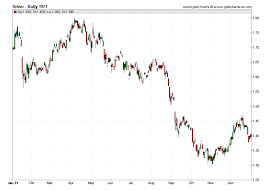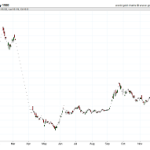In 1971, the global economy underwent a significant transformation that impacted various industries, including silver, real estate, and automobiles. The year marked the demonetization of 90% silver coins in the US, the severing of ties between the US dollar and gold, and the adoption of free-floating fiat currency exchange rates by all nations. These changes had a profound effect on the silver industry, with prices fluctuating between $1.30/oz and $1.80/oz.
This article explores the fluctuations in silver prices during 1971 and their impact on the real estate and automobile industries. By examining historical data, readers can gain insight into the cost of living during this era, including the price of a three-bedroom house in Lincoln Park for $34,500 and a brand new Ford Maverick for $2,195.
Through this analysis, readers can gain a better understanding of the economic and social landscape of 1971 and how it compares to the present day.
Silver Prices Overview
The 1971 silver prices experienced a range of fluctuation, peaking at $1.80/oz and bottoming at $1.30/oz in the second half of the year. This was a significant year for the silver market, as the United States demonetized 90% silver coins on August 15, 1971.
Also, President Nixon cut ties to gold and suspended the Bretton Woods Agreement, leading all nations to begin trading using free-floating fiat currency exchange rates.
Factors affecting silver prices include supply and demand, the strength of the US dollar, and economic and political uncertainty. In comparison to present-day prices, silver prices in 1971 may seem relatively low.
However, it’s essential to note that the current economy and global market conditions are much different than they were in 1971. The LBMA Silver Price Auction currently represents composite prices from trading banks and brokerages, and the forex silver markets trade 24/7, providing a more accurate representation of real-time silver prices.
Historical Car Prices
One could observe that the values of various automobile models during 1971 were quite distinct from one another, with some being priced significantly higher than others.
For instance, the Ford Torino Squire Station Wagon was priced at $3,895.00 when it was first released, which was considered to be a luxury car at the time. On the other hand, the Ford Falcon station wagon, which was released in 1964, was priced at $395.00 when it was sold used in 1971.
The prices of these vehicles reflect the inflation impact of silver prices during the time and how it affected the purchasing power of consumers.
Classic cars, such as the 1967 Pontiac Firebird and the 1966 Ford Galaxie convertible, were also available during 1971 and were priced significantly lower than their original release prices. This is because classic cars were not as popular during that time and were considered to be a niche interest. However, these cars have since become highly sought after and are now sold at significantly higher prices.
Overall, the prices of cars in 1971 reflect the economic conditions of the time, with the inflationary impact of silver prices affecting the purchasing power of consumers, and the popularity of certain models determining their price.
1971 Real Estate Prices
Reflecting the economic conditions of the time, the values of various properties in 1971 were distinct from one another, with some being priced significantly higher than others. The prices of properties were influenced by several factors, such as the location of the property, the size, the type of property, and the demand in the market.
For instance, the Lincoln Park house, which had three bedrooms, was priced at $34,500.00, while the Mendham house, with five bedrooms, nine acres, and a pond, was priced at $125,000.00. Similarly, the rental prices of the properties varied depending on the number of rooms, location, and amenities. The Parsippany house rental, which was a seven-room ranch with two acres, was priced at $400.00/month, while the Lake Hiawatha room rental, with two bedrooms, was priced at $200.00/month.
Trends in mortgage rates also affected the real estate prices in 1971. The mortgage rates during this period were around 7.5%, which was relatively high compared to the current rates. The high mortgage rates made it difficult for people to buy homes, which led to a decrease in demand for properties. This, in turn, resulted in a decrease in real estate prices.
However, properties that were priced lower, such as the Rockaway house rental, with six rooms, were still in demand and had relatively stable prices. Overall, the real estate prices in 1971 were influenced by multiple factors, including location, size, type, and demand, as well as the trends in mortgage rates.
Frequently Asked Questions
What was the average income of households in 1971?
The average household income in 1971 was $10,600. Adjusted for inflation, this is equivalent to approximately $66,000 in 2021. Inflation rates were high during this time, with an annual rate of 4.3%.
Were there any significant events in the political or social landscape that affected silver prices in 1971?
The Vietnam War and the Nixon administration played a significant role in the silver market in 1971. The increased spending on the war led to inflation and a weakened dollar, causing silver prices to rise. Additionally, the Nixon administration’s decision to suspend the convertibility of the US dollar to gold further destabilized the currency, leading investors to turn to silver as a safe-haven asset.
How did the price of silver in 1971 compare to other precious metals like gold and platinum?
Silver vs. Gold: Comparing Prices in 1971 shows that gold was significantly more expensive than silver, with an average price of $40.80 per ounce. Platinum, on the other hand, was even more expensive, with an average price of $97.60 per ounce. Today, precious metals remain a popular investment option for those seeking asset preservation and diversification.
What was the average cost of groceries and household items in 1971?
In 1971, the average cost of groceries and household items was impacted by inflation. For example, a gallon of milk cost around $1.18, a loaf of bread cost about $0.25, and a dozen eggs cost around $0.53. Other household items such as a washing machine cost around $250.
How did the price of silver in 1971 affect the production and sales of silver jewelry and other consumer goods?
The price of silver in 1971 had a significant impact on the global market for silver jewelry and other consumer goods. As the price of silver increased, demand for these items decreased, leading to changes in production and sales strategies.





